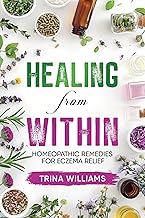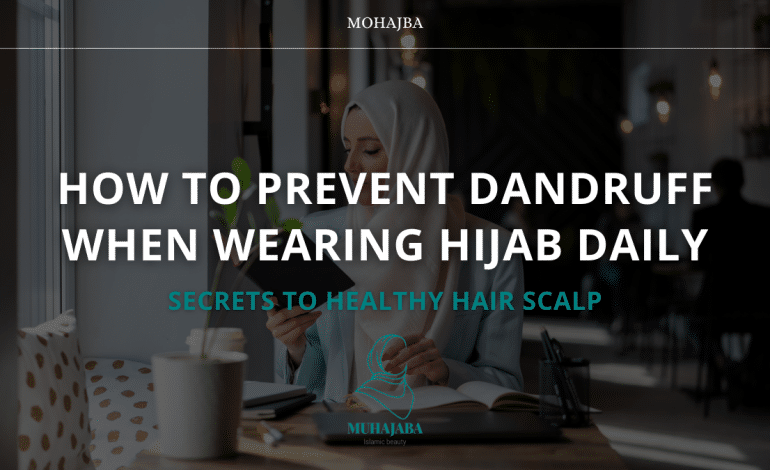[My Hair Story] How I Recovered from Hijab-Related Hair Loss
![[My Hair Story] How I Recovered from Hijab-Related Hair Loss](https://mohajba.com/wp-content/uploads/2025/04/hijab_hair_loss_feature-770x470.jpg)
For as long as I can remember, headscarves have been an integral part of my life. My hijab is not just a garment, but a statement of faith, identity, and pride. However, about three years ago, I encountered an unexpected challenge—severe hair loss. I was alarmed by the amount of hair accumulating on my pillow and brush. As it turned out, wearing my hijab every day was inadvertently contributing to my hair’s decline. In this comprehensive account, I share how I tackled this issue head-on, and how you can, too, without compromising your beliefs or style. 🌼
Understanding Hijab-Related Hair Loss
How the Hijab Can Affect Hair Health
While the hijab itself is not the root cause of hair loss, improper practices and care, while wearing it, can lead to issues such as hair thinning and breakage. The main culprits are often related to the way the hair is styled and maintained under the hijab. Many women tie their hair tightly into buns or ponytails, which adds undue stress to the roots. Opting for hairstyles that put less strain on the scalp is essential to prevent damage.
Moreover, constant friction between the hair and scarf, combined with a lack of ventilation, creates conditions where scalp health may suffer. Natural oils that keep our hair healthy might not circulate freely because of restricted air flow, resulting in dryness or substantial oil build-up.
Common Symptoms of Hijab-Related Hair Loss
If you frequently experience hair breakage, thinning edges, or chronic scalp itchiness, it might be time to evaluate how your hijab-wearing practices could be impacting your hair health. Recognizing these symptoms early can make a significant difference in devising an effective hair care routine to combat hijab hair loss.
My Journey to Recovery: Strategies & Solutions
Motivated to find a solution, I embarked on a detailed exploration aiming to restore my hair’s health. Here’s the step-by-step approach that led to remarkable improvements.
Step 1: Embracing a Better Hair Care Routine
To prevent hair loss, a complete overhaul of my hair care routine was necessary. Here’s what I implemented:

Gentle Cleansing
I switched to milder shampoos free of sulfates and parabens. While harsher products may give the hair a temporary luster, they strip away essential oils, weakening hair in the long run.
Conditioning is Key
Conditioners enriched with natural oils like argan or coconut have been miraculous. They not only moisturize but also provide that extra layer of protection against friction from the hijab. I focused on carrying out deep conditioning treatments weekly, which greatly improved the texture and resilience of my hair.
**Example Products:**
- Maui Moisture Heal & Hydrate: Great for adding moisture without making hair greasy.
- SheaMoisture Raw Shea Butter Deep Treatment Mask: Perfect for deep conditioning when your hair needs a revival.
Step 2: Optimizing Styling Techniques
I learned that not all hairstyles are created equal. Protecting my hair from consistent strain and breakage involves the following changes:
Looser Hairstyles
Transitioning to looser buns and braids was a game-changer. Not only did it reduce tension, but it also alleviated pressure on my scalp, decreasing the likelihood of hair thinning around the temples.
**Do This:**
- Use loose styles supported by scrunchies to minimize pulling.
**Not That:**
- Avoid tight ponytails and rubber bands that suffocate hair strands.
Step 3: Scalp Care and Nourishment

Scalp health is often overlooked but is paramount when tackling hair loss. Here’s what worked for me:
Regular Massaging
Incorporating regular scalp massages enhanced blood circulation to my scalp, nourishing the roots. I use oils like jojoba or olive, both rich in nutrients that my hair craved.
Simply Letting It Down
Whenever possible, I let my hair down while at home. It’s crucial to give the hair some downtime away from styling to rejuvenate naturally.
Step 4: Choosing Hijabs Wisely
Fabric choice greatly impacts how your hair responds beneath the hijab. I transitioned to hijabs made from cotton and silk, known for their breathability and reduced friction. Synthetic fabrics often exacerbate scalp issues, especially during warmer months.
A Pro-Tip
Prior to styling, wear an underscarf made of silk to cut down on hair-on-fabric friction. This simple addition can significantly diminish breakage.
Step 5: Nutritional and Lifestyle Adjustments
Complete hair recovery involves incorporating holistic lifestyle changes too. I paid closer attention to my diet and started including foods beneficial for hair health.
**Key Nutrients:**
- Iron and Zinc: These metals are crucial for strengthening hair follicles. I included more leafy greens, nuts, and seeds filled with these nutrients.
- Omega-3 Fatty Acids: Found in fish and flaxseeds, they promote hair shine and elasticity.
Besides dietary changes, regular exercise and adequate hydration became staples, balancing out not just hair health, but overall well-being.

Expert Tips & Common Mistakes
Throughout this journey, expert advice played a crucial role in guiding effective, practical steps.
Experts Say
**Dr. Sarah Habib, a dermatologist, cautions:** “Misconceptions revolve around the practice of wearing hijabs. The key is maintaining healthy hair habits beneath the style choice.” Regularly consulting a professional ensures that the advice you follow is personalized and sound.
Common Mistakes to Avoid
- Ignoring Ventilation: Don’t keep your hair tied up all day. Letting it breathe is essential.
- Skipping Conditioner: This omission can lead to lifeless, dehydrated locks.
- Rushed Undressing: Always carefully remove your hijab to avoid unnecessary pull and breakage of strands.
Real-Life Testimonies
To me, nothing makes solutions feel more viable than knowing others have experienced them:
- Ayesha, a long-time hijabi friend, once shared, “Intersecting hair care with hijab culture takes understanding and patience, but the results—hair that thrives without constraint—speak volumes.”
- Fatima, another acquaintance, said she found success by balancing traditional practices with modern care tips: “Listening to both the wisdom of our grandmothers and dermatologists helped forge my perfect routine.”
Final Thoughts: Maintaining and Nurturing
Adapting and committing to these strategies transformed not only the health of my hair but also my confidence and acceptance into embracing an integrated lifestyle without compromise. Hijab hair loss is an issue faced by many, often silently and privately. By sharing my personal story, I hope to encourage others in similar situations or those interested in learning more to invest in their hair health while fully embracing their cultural and spiritual practices. 🙏
At the heart of it, understanding the unique journey we’re all on, resembles adding a vibrant color to a complex tapestry of who we are. Whether seeking professional advice or tweaking hair habits at home, remember that balancing personal comfort and cultural expression is perfectly attainable.
For anyone experiencing hijab-related hair challenges, know that change and recovery are possible with informed adjustments and a patient mind. Let’s celebrate our diverse crowns, whatever form they may take. 🌟
References
- Expert conversations and interviews
- Personal anecdotes and experiences
- Dermatologist’ recommendations on hair and scalp health
Frequently Asked Questions
What are the benefits of using a hair mask in my hair care routine?
Using a hair mask can provide several benefits, including hydration, smoothing, strengthening, curl definition, heat protection, and damage repair. Hair masks infuse the hair with moisture, help coat the hair shaft to seal split ends, reduce breakage, and protect the hair from heat styling and environmental damage[1][4].
What ingredients should I look for in a hair mask?
Effective hair masks often include ingredients such as coconut oil, argan oil, shea butter, honey, avocado oil, green tea, and coconut water. These ingredients provide nourishment, moisturize, and protect the hair, offering benefits like softening, moisturizing, and protecting against damage[2][5].
How often should I use a hair mask in my routine?
You should use a hair mask whenever your hair feels dry, unmanageable, or in need of intense hydration. This can vary depending on your hair type and needs, but generally, using a hair mask once or twice a week can help maintain healthy and moisturized hair[1][4].
How do I apply a hair mask for the best results?
To apply a hair mask effectively, shampoo your hair first, then apply the mask, focusing especially on the ends where hair tends to be the most damaged. Leave the mask on for anywhere from 10 minutes to overnight, depending on the type of mask and your hair’s needs[1][4].
References











